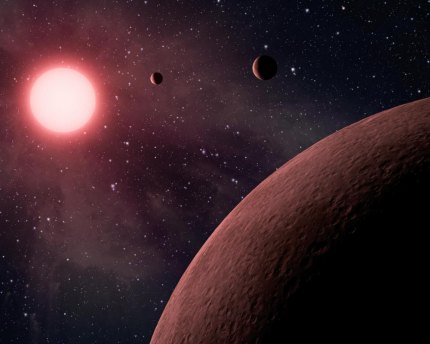
Using data from the Kepler space observatory, scientists announced during a press conference Monday that they had found 219 planet candidates, of which 10 are potentially habitable. A planet is in the habitable zone of its star if the temperature of that planet might be suitable for water. Also during the press conference, scientists said that they are now able to make more precise distinctions about the size and type of planets. Here is the rundown:
About Kepler: Launched in 2009, Kepler is a robotic spacecraft that has taken images of stars. The instrument captures planets as they transit in front of their respective stars, causing a dimming of the star’s light. In May 2013, data collection came to an end with the failure of part of the spacecraft, although scientists continued to make findings from data gathered before the problem.
Meanwhile, a team of researchers and engineers developed a strategy to use pressure from sunlight to help control the spacecraft. Another mission, called K2, continued Kepler’s planet hunt.
The results delivered at a NASA news conference Monday were from the initial Kepler mission. Kepler spent those first four years observing a single star field in the Cygnus constellation. Up until now, Kepler has identified 4,034 planet candidates orbiting other stars. Working with that data, Kepler scientists have confirmed that 2,335 are planets.
Among the total number, 49 (including the 10 new potentially life-supporting planets) are “terrestrial sized and in the habitable zone of their star,” said Susan Thompson, a Kepler research scientist with the SETI Institute in California. Scientists have verified the existence of 30 of those 49 planets.
Scientists can measure the size of the planet and how far it is from a star. They do not know absolutely whether the planets are habitable. Less than half of the 10 are around stars like our sun, Thomson said.
Are we alone? Scientists are releasing a Kepler mission catalog of planet candidates. “This survey catalogue will be the foundation for directly answering one of astronomy’s most compelling questions,” Thompson says. “How many planets like our Earth are actually in the galaxy?”
How Kepler changed what we know about exoplanets: “We’ve discovered that what we thought was a single type of planet is actually two distinct classes of planets with quite different properties,” explained Benjamin Fulton, doctoral candidate at the University of Hawaii in Manoa and an author of research about the findings. The Kepler mission had already demonstrated that smaller planets between the sizes of Earth and Neptune are common.
But smaller planets fall into two groups. “Most of the planets in the first group may be akin to the Earth with rocky surfaces and little to no atmospheres. Planets in the second group are probably more like cousins of Neptune,” Fulton said, “with thick atmospheres and no surface to speak of.”
Intermediate-sized planets are rare.
Why doesn’t our solar system have any mini Neptune-sized planets? “It is interesting that we don’t have what appears to be the most common-type of planet in the galaxy,” Fulton remarked. “Although you may have heard about … this potential planet that is far out in the outer reaches of the solar system called planet nine. That one is potentially one of these super-Earths or mini-Neptunes.”
What’s ahead: “It is amazing the things that Kepler has found. It has shown us these terrestrial worlds. And we still have all this work to do to really understand how common earths are in the galaxy,” Thompson said. “I’m really excited to see what people are going to do with this catalogue. Because this is the first time we have a population that is really well characterized and we can now do these statistical studies and really start to understand the Earth analogues out there.”
Related:
Neighboring exoplanets locked in orbit
See all Kepler stories here
Follow StudyHall.Rocks on Twitter.
If you would like to comment, give us a shout, or like us on Facebook and tell us what you think.